American 1644 QUECHUA MANUSCRIPT book Cuzco Peru taught children Spanish US
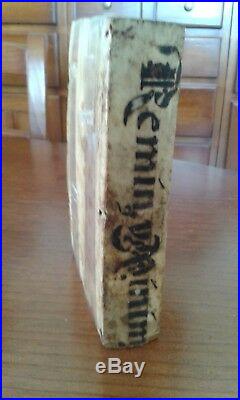
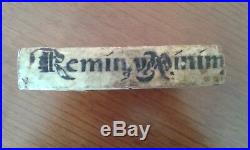
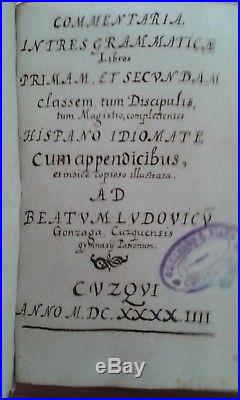
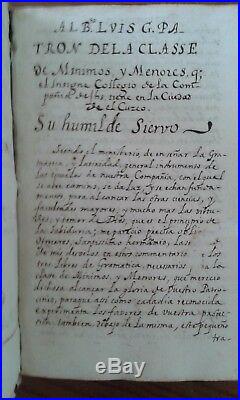
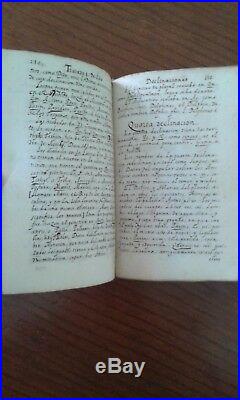
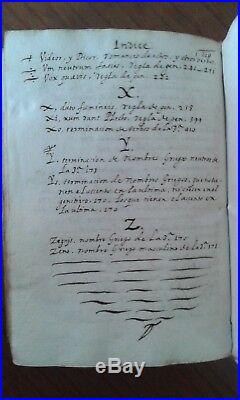
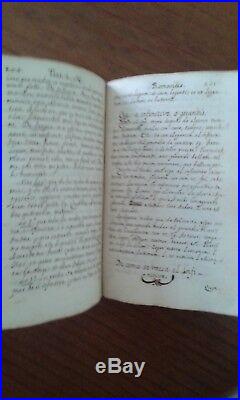
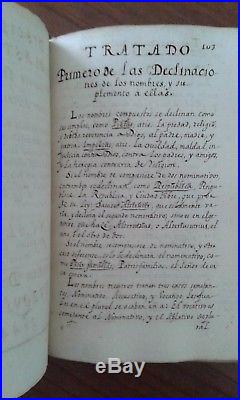

Book Manuscript written in Cuzco Peru for to taught the childrens spanish. Finished in Cuzco on August 24, 1644. With good clear and legible handwriting. 4 h + 450 pp + 1 h + 19 index sheets.
Discreet Ex libris semi-deleted on cover. 15.5 x 11.5 cms.
Divided into three chapters: I. Dedicated to Blessed Luis Gonzaga. · Teaching of minimums in which is treated the way to be taught in children, very easy for the teacher and profitable for the disciples. In the way it must be for children to learn to decline.The style that the teacher has to keep for children to learn to conjugate. · Silva of chosen names and epithet. Second home page in Latin.
· First treaty of declensions and names and supplement to them. · First treaty of the supplement to the Latin and Greek Declination. · Some precepts easier and more useful for beginners who begin to compose. · 2nd treaty of romances. · Treaty 3 of Genres and supplements to them.
· Treaty 4 of Predéritos and supinos. Index of the most important things contained in this book. The manuscript is of unknown author, although it could be attributed to the Jesuit Don Francisco de Ávila, one of the best writers in Quechua language. I publish in 1646 his Treaty of the Gospels, which is a collection of sermons in the Indian and Castilian languages, for the whole year and the teaching of the Indians and extirpation of idolatries. Curiously in his introduction he dictates some lessons on phonetics and spelling.He says that the orthographic rules of González Holguin are not enough. He omitted some pronunciations of several syllables. It is singular that in this work was incorporated a small detail on lessons in phonetics and spelling. The tone that Avila uses in his work is simple, plain, childish, almost, as directed to a group of humble, simple Indians. The Manuscript analyzed focuses on the problems of teaching Latinity and before dealing with style focuses on analyzing bad pronunciation.
Being the ministry of teaching Grammar and general Latinity instruments of the school of our Company with which opens the way is given Light and are laid foundations to reach the other major sciences and faculties and much more the virtues and fear of. His style is plain, simple, thought. To educate a humble people and also directed to their direct teaching to the children, and in how the Teacher should teach.
The work did not see the light, Avila is known to be a fervent extirpador of idols, and yet like many others of its same order great connoisseur and highly respectful with the language Quechua and with its rich cultural and expression. It is probable that this respect for the language Quechua, or other reasons made that this work, like other of his writings never saw the light.Acabado en el Cuzco a 24 de Agosto de 1644. Con buena caligrafía clara y legible. 4 h + 450 pp + 1 h + 19 hojas de índice. En papel de hilo recio. Discreto Ex libris semi-borrado en portada.
15,5 x 11,5 cms. Dividido en tres capítulos: I. Dedicada al Beato Luis Gonzaga. · Magisterio de mínimos en que se trata el modo que se ha de tener en enseñar a los niños, muy fácil para el maestro y provechoso para los discípulos.
De el modo que se ha de tener para que los niños aprendan a declinar. Del estilo que el maestro ha de guardar para que los niños aprendan a conjugar. · Silva de escogidos nombres y epíteto. Segunda portada propia en Latín. · Tratado primero de las declinaciones y de los nombres y suplemento a ellas. · Tratado primero del suplemento a las Declinaciones latinas y griegas. · Algunos preceptos mas fáciles y provechosos para los principiantes que comienzan a componer. · Tratado 2° de romances. · Tratado 3° de Géneros y suplementos a ellos. · Tratado 4° de Pretéritos y supinos. Índice de las cosas mas principales que se contienen en este libro. El manuscrito es de autor desconocido, aunque podría ser atribuido al Jesuita Don Francisco de Ávila, uno de los mejores escritores en lengua quechua. Publico en 1646 su Tratado de los evangelios, que es una colección de sermones en lengua índica y castellana, para todo el año y la enseñanza de los indios y extirpación de idolatrías. Curiosamente en su introducción dicta algunas lecciones sobre fonética y ortografía. Dice que las reglas ortográficas de González Holguín no son suficientes. Este omitió algunas pronunciaciones de diversas sílabas.Es singular que en esta obra se incorporó un pequeño detalle sobre lecciones de fonética y ortografía. El tono que Ávila utiliza en su obra, es sencillo, llano, infantil, casi, como dirigido a un conjunto de indios humildes, sencillos. El Manuscrito analizado se centra en los problemas de enseñar la latinidad y antes de tratar el estilo se centra en analizar la mala pronunciación. Siendo el ministerio de enseñar la Gramática y Latinidad general instrumentos de la escuela de nuestra Compañía con el qual se abre el camino se da Luz y se echan fundamentos para alcanzar las otras ciencias y facultades mayores y mucho mas las virtudes y temor de.
Dios principio de la Sabiduría... Su estilo es llano, sencillo, pensado. Para educar a un pueblo humilde y también orientado a su enseñanza directa a los niños, y en como debe enseñar el Maestro. La obra no vio la luz, Ávila es conocido por ser un ferviente extirpador de ídolos, y sin embargo como muchos otros de su misma orden gran conocedor y sumamente respetuoso con la lengua Quechua y con su alta riqueza cultural y de expresión.
Es probable que ese respeto por la lengua Quechua, u otras razones hicieran que esta obra, al igual que otros de sus escritos no vieran nunca la luz. The item "American 1644 QUECHUA MANUSCRIPT book Cuzco Peru taught children Spanish US" is in sale since Tuesday, April 26, 2016.
This item is in the category "Antiques\Manuscripts". The seller is "van_amburgh" and is located in Aranjuez.This item can be shipped worldwide.
- Date of Publication: 1644
- Region: PERU
- Type: Handwritten Manuscript
- Original/Facsimile: Original
- Language: Quechua and Spanish
- Place of Publication: CUZCO
- Special Attributes: First Edition
